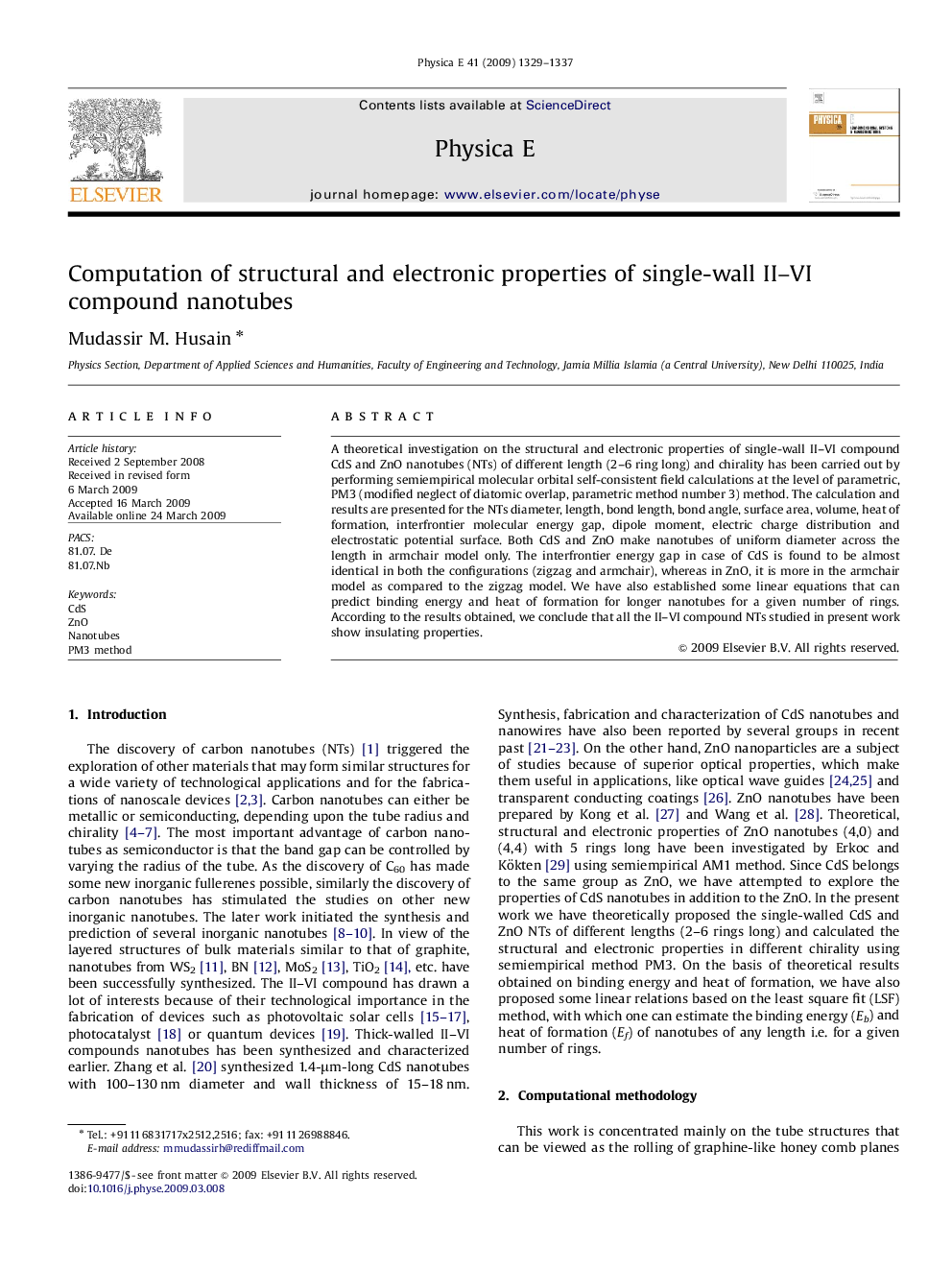| Article ID | Journal | Published Year | Pages | File Type |
|---|---|---|---|---|
| 1545282 | Physica E: Low-dimensional Systems and Nanostructures | 2009 | 9 Pages |
A theoretical investigation on the structural and electronic properties of single-wall II–VI compound CdS and ZnO nanotubes (NTs) of different length (2–6 ring long) and chirality has been carried out by performing semiempirical molecular orbital self-consistent field calculations at the level of parametric, PM3 (modified neglect of diatomic overlap, parametric method number 3) method. The calculation and results are presented for the NTs diameter, length, bond length, bond angle, surface area, volume, heat of formation, interfrontier molecular energy gap, dipole moment, electric charge distribution and electrostatic potential surface. Both CdS and ZnO make nanotubes of uniform diameter across the length in armchair model only. The interfrontier energy gap in case of CdS is found to be almost identical in both the configurations (zigzag and armchair), whereas in ZnO, it is more in the armchair model as compared to the zigzag model. We have also established some linear equations that can predict binding energy and heat of formation for longer nanotubes for a given number of rings. According to the results obtained, we conclude that all the II–VI compound NTs studied in present work show insulating properties.
